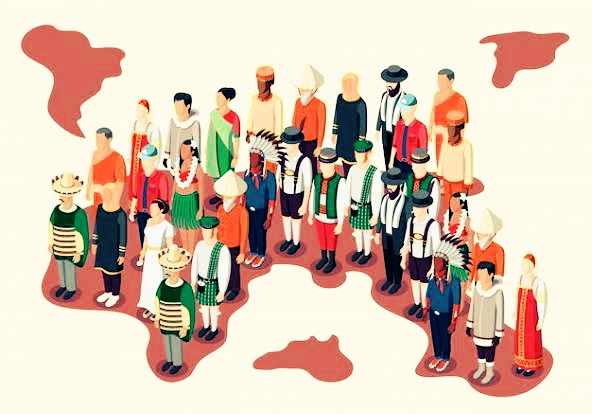
In a world that is increasingly interconnected, the art of capturing cultures through photography and film has never been more vital. These visual mediums serve as powerful tools for storytelling, allowing us to explore, understand and celebrate the rich tapestry of human experience across the globe. They surpass language barriers and offer an intimate glimpse into the lives, traditions and values of diverse communities. This blog delves into the ways photography and film illuminate cultural narratives, preserving them for future generations while fostering empathy and appreciation among audiences.
The Power of Visual Storytelling
Photography and film are not just about framing a moment; they are about conveying emotions, narratives and the essence of a culture. A single photograph can evoke a myriad of feelings, capturing the joy of a festival, the gravity of a ritual, or the everyday lives of individuals in their cultural context. When we view an image or a scene on film, we are instantly transported into that world, allowing us to experience it from an insider’s perspective.
Photography and film serve as more than just artistic expressions as they are windows into the soul of a culture. Through the lens of a camera, the ordinary becomes extraordinary, and the ephemeral becomes eternal. A photograph of a vibrant festival, a film documenting daily life in a remote village, or a portrait of a traditional craftsman all offer unique insights into cultural practices and societal values.
Preserving Traditions: Visual storytelling plays a crucial role in preserving cultural heritage. Traditional practices, festivals, and ceremonies often evolve or risk fading into obscurity. Photographers and filmmakers who document these moments contribute to a visual archive that future generations can access. For instance, images of indigenous ceremonies or ancient rituals can educate and inspire, helping to keep these traditions alive.
 Cultural Preservation and Representation
Cultural Preservation and Representation
As globalization continues to influence cultural dynamics, the role of photography and film in preserving traditions and practices becomes increasingly significant. These mediums can document rituals, languages, and lifestyles at risk of being forgotten. By capturing the nuances of a culture, photographers and filmmakers act as custodians, ensuring that these legacies are not lost in the tide of change.
However, it is crucial to approach cultural representation with sensitivity and respect. Ethical storytelling involves understanding the context of the subjects being portrayed and giving them agency in how their stories are told. Collaborating with community members and prioritizing their voices can lead to richer, more authentic narratives. The rise of participatory filmmaking, where subjects take an active role in the storytelling process, is a testament to this evolving approach in the industry.
Bridging Cultures Through Empathy
One of the most profound impacts of cultural photography and film is their ability to foster empathy among audiences. When we see the world through someone else’s lens, we are reminded of our shared humanity. Films like “The Kite Runner” or documentaries such as “Won’t You Be My Neighbor?” challenge us to consider perspectives that differ from our own, encouraging understanding and compassion.
Photography exhibitions, like those hosted by National Geographic or local cultural organizations, invite viewers to engage with the images and the stories behind them. These experiences can spark conversations, challenge stereotypes, and inspire action, reminding us that we are all part of a global community.
The Impact of Visual Media on Cultural Understanding
The influence of photography and film extends beyond the immediate visual experience. These mediums have the power to foster cross-cultural understanding and empathy.
Bridging Gaps: Visual media can bridge cultural gaps by presenting stories that challenge preconceived notions and stereotypes. For instance, a documentary showcasing the daily lives of people in a remote region can humanize and demystify them for viewers who might otherwise have little exposure to their realities.
The Digital Age and Cultural Sharing
In today’s digital landscape, the democratization of photography and film has transformed the way cultures are captured and shared. Social media platforms allow individuals to document their lives and cultural practices, creating a mosaic of global experiences. Hashtags like #CulturalHeritage or #EverydayCultures connect people across borders, fostering a sense of solidarity and appreciation for diversity.
However, this accessibility also comes with challenges. The potential for cultural appropriation and misrepresentation exists, underscoring the importance of mindful sharing. It is essential to credit and respect the cultures being showcased, ensuring that the narrative remains authentic and representative.
Conclusion
Capturing cultures through photography and film is not merely an artistic endeavor infact it is a vital act of cultural preservation, representation and empathy. As we navigate a world rich in diversity, these means remind us of the beauty in our differences while highlighting the common threads that unite us. By embracing the power of visual storytelling, we can continue to celebrate, honor and learn from the myriad cultures that enrich our shared existence. Whether you are a photographer, a filmmaker, or an avid audience member, your engagement with these art forms plays a crucial role in shaping a more inclusive and understanding world.
Let us continue to capture, share and appreciate the cultures that make our lives vibrant and meaningful.









